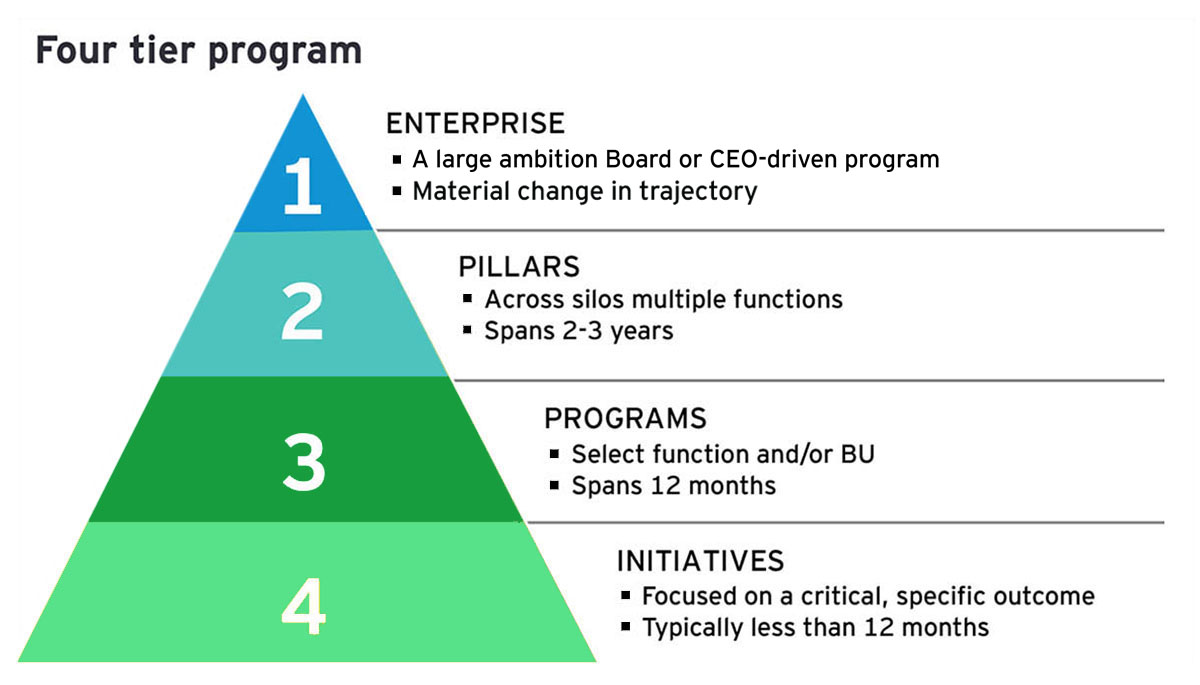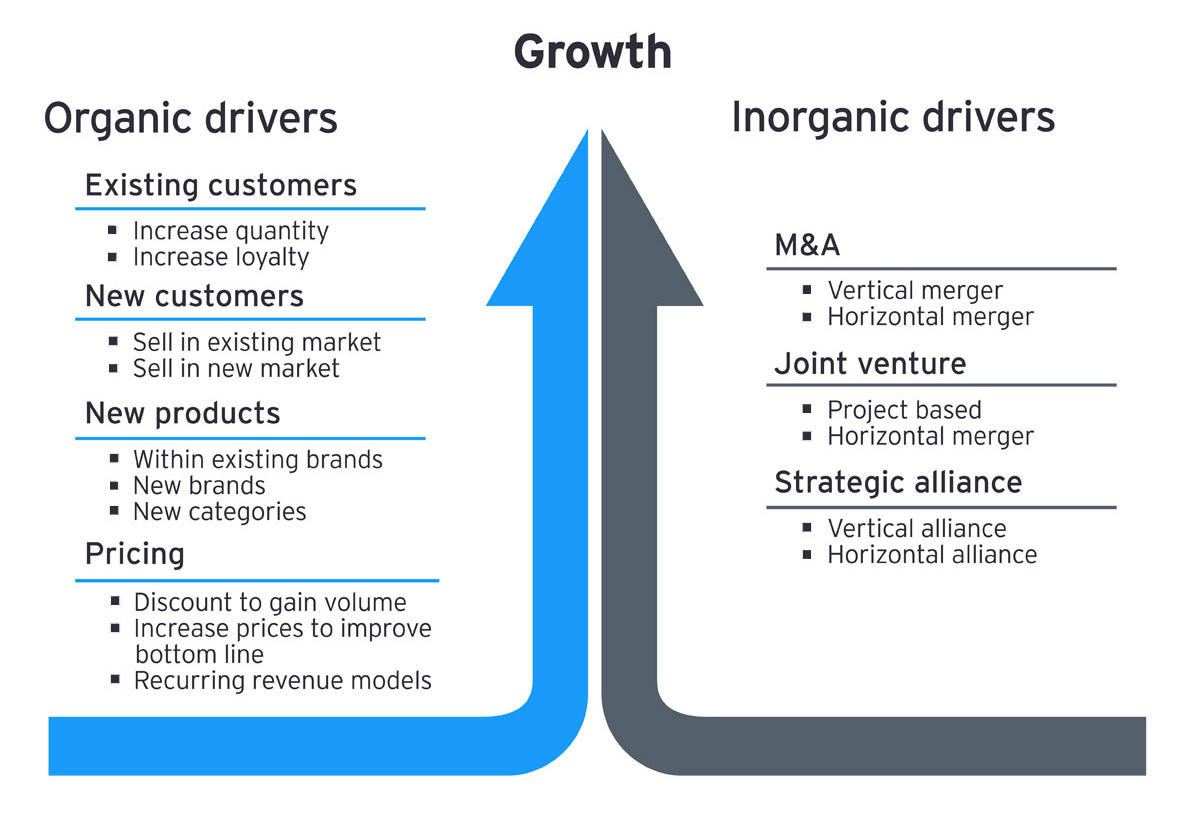
By Elizabeth Kaske and Matthew McGonegle
Despite the high cost of capital and a slew of macroeconomic uncertainties, more than 70% of the most confident global chief executive officers (CEOs) are betting on a mergers and acquisitions (M&A) comeback in 2025. But to escalate value creation and total shareholder return (TSR), businesses may need to fundamentally change the trajectory of their enterprise strategy.
Enterprise strategy shapes a company’s M&A approach
Business school teaches the fundamentals of strategy. The CEO and the board lead enterprise strategy to achieve significant change, using various pillars, programs, and initiatives to drive TSR. Yet we still hear about frequent disconnects from the enterprise strategy up, down, and across organizations.

Our work on thousands of M&A deals reveals five actions that deal teams can take to improve their outcomes:
1. Create a strong, strategic gameplan.
2. Allocate capital based on the enterprise strategy, backed up by data.
3. Use artificial intelligence (AI) for competitive advantage.
4. Tap the deal team’s knowledge.
5. Communicate the deal thesis early.
Action 1: Get your strategic gameplan on.
Best-in-class strategy and business teams constantly have their fingers on the pulse of their growth drivers. They prepare for each year with a plan to capture growth through organic means, such as new products and new and existing customers, and inorganic means, including M&A, joint ventures, and strategic alliances. This strategic plan informs most M&A decisions and should help break any deadlocked decisions when opportune deals land on the corporate development team’s desks.

Capital allocation
Many companies are capable of developing their strategy, and numerous business units are competent at creating investment cases for their programs and initiatives. However, these companies may still experience challenges when linking strategies and opportunities together. An effective capital allocation strategy incorporates the enterprise strategy and helps decision-makers plan, select, manage, and evaluate investment opportunities.
Action 2: Allocate capital based on the enterprise strategy, backed up by data.
Within the context of M&A, this means having a fact-based and data-driven approach to the volume, type, and focus areas (market, product, geography) for your planned deals within a given timeframe. Opportunistic transactions will pop up, and when they do, decision-makers should prioritize deals with a balanced scorecard of financial metrics, such as capital requested, return on invested capital (ROIC), internal rate of return (IRR) and revenue, as well as non-financial factors, such as strategic importance, customer satisfaction, and business continuity risk.

Deal sourcing
Effective acquirers constantly develop and refresh a strong pipeline of targets through various means.
Yes, it helps to have strong relationships with investment banks who know your sector and know which assets are on the market. But your organization’s business leaders know the business best. The business unit presidents of effective serial acquirers identify early potential targets and use their relationships to bring the opportunities to corporate development.
Action 3: Use AI to get a leg up.
To stay competitive and maximize acquisition potential, leading deal teams are increasingly turning to AI as a strategic tool to enhance their deal sourcing and improve efficiency and effectiveness. Specifically, AI can:
• Analyze market trends
• Identify promising targets
• Forecast outcomes
• Map relationships
• Assess sentiment
• Provide automated alerts
• Streamline due diligence
• Facilitate collaboration
Companies can use AI tools, such as EY Competitive Edge, to accomplish these tasks.
Action 4: Tap into deal team expertise.
Deals can commence in various contexts, such as market expansion, technology acquisition, or strategic partnerships. To develop transaction strategy, use the brain trust of the deal team and advisors to navigate the complex journey, from initial target communication through valuation, negotiation, and final bid. No detail is too miniscule with sequencing, planning offers and counteroffers, and aligning roles and responsibilities. These tactics help streamline the process and limit resistance, contributing significantly to the success of the deal.
Preliminary analysis
While valuation, business modeling, and benchmarking are fundamental, business leaders should not overlook their importance. The preliminary analysis is critical in verifying the contemplated deal will lead to the value creation and TSR that the enterprise strategy is designed to achieve. In addition to effective analysis rooted in data—and not in the emotions of any executives who might want the deal to happen—this early stage is when integration leaders should be brought into the fold.
Action 5: Communicate the deal thesis early.
Clearly documenting the investment thesis, value drivers, integration strategy, and resourcing is a leading practice that can help expedite the subsequent phases of the deal journey after a letter of intent is signed, diligence commences, transaction documents are signed, and the deal is closed.
By taking these strategic actions early in the deal lifecycle, companies can confidently execute their M&A strategies and their enterprise strategy, enabling value creation and increased TSR. The companies that wait on these areas risk missing out on valuable time to quickly realize value and eroding the deal value post-close.
Learn more about how the EY-Parthenon Mergers & Acquisitions team helps companies boost M&A growth and competitive edge with strategic planning, deal sourcing, due diligence, and AI-powered platforms.
Elizabeth Kaske is EY-Parthenon Americas Mergers and Acquisitions Leader, Ernst & Young LLP.
Matthew McGonegle is EY-Parthenon Transaction Strategy and Execution Principal, Ernst & Young LLP.
The views reflected in this article are the views of the authors and do not necessarily reflect the views of Ernst & Young LLP or other members of the global EY organization.